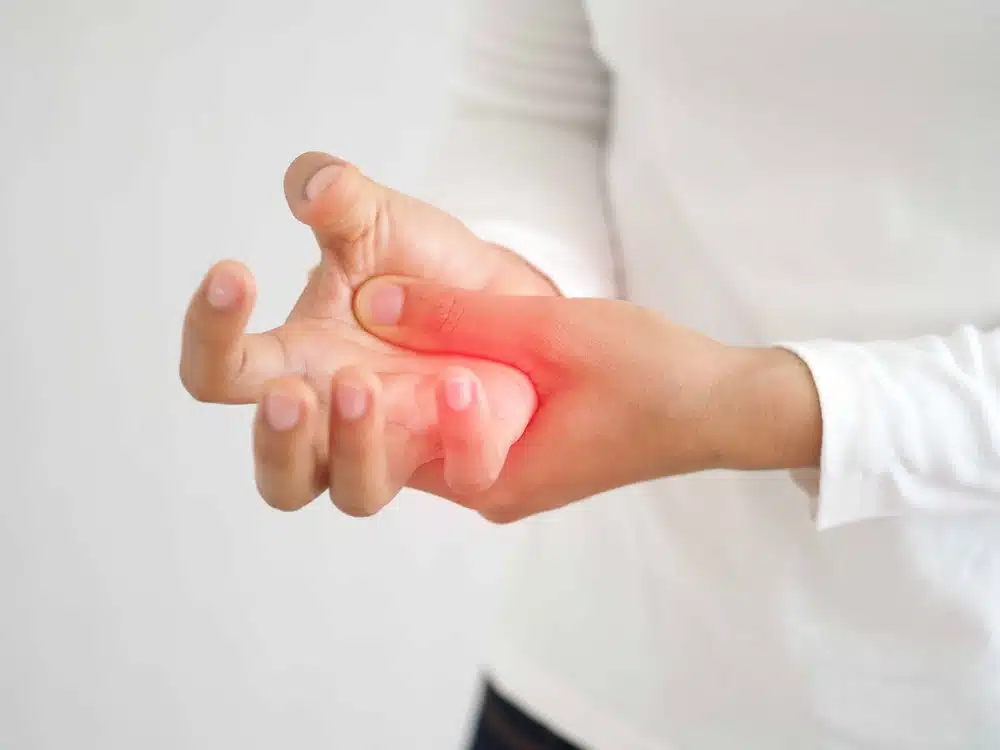This website uses cookies so that we can provide you with the best user experience possible. Cookie information is stored in your browser and performs functions such as recognising you when you return to our website and helping our team to understand which sections of the website you find most interesting and useful.
WHAT IS HAND FASCIOTOMY SURGERY?
Hand fasciotomy surgery, also known as fasciectomy or fasciotomy release, is a surgical procedure performed to treat patients who suffer from Dupuytren’s disease.
Persons who suffer from this condition have a fasciectomy to remove fascia (a fibrous layer of tissue) when their hand tightens; this is a symptom of the disease.
This condition causes one or more of the fingers to involuntarily curl toward their palm. In severe cases, patients can’t straighten their fingers. The fingers relax after a fasciectomy, improving hand function.
In Dupuytren’s contracture, the fascia of the palm of the hand becomes thick and tight.
Fasciotomy is a procedure where the fascia, the connective tissue that surrounds muscles, is opened to relieve pressure and restore blood flow to the affected hand.
DUPUYTREN’S DISEASE
Dupuytren’s disease, also known as Dupuytren’s contracture, is a progressive condition that affects the connective tissue (fascia) of the hand, beneath the skin of the palm and fingers. It is characterized by the formation of thickened, fibrous cords or nodules in the palm and fingers, which can gradually contract and pull the affected fingers into a bent or flexed position.
The exact cause of Dupuytren’s disease is not fully understood, but it is believed to involve a combination of genetic predisposition, environmental factors, and certain medical conditions. It tends to run in families and is more common in people of Northern European descent.
Dupuytren’s disease tends to target patients advancing in age, men, smoking, alcohol consumption, and certain medical conditions such as diabetes and epilepsy.
Dupuytren’s disease progresses slowly over time, with symptoms usually starting as small nodules or lumps in the palm that may initially be painless. As the disease advances, the nodules can develop into thick cords that extend into the fingers, causing progressive contracture and limiting the ability to straighten the affected fingers fully.
Common symptoms of Dupuytren’s disease include:
Nodules or lumps in the palm: Firm, raised nodules or lumps may develop in the palm, typically near the base of the fingers.
Cord formation: Thickened, fibrous cords may develop beneath the skin of the palm and extend into the fingers, causing contracture.
Finger contracture: The affected fingers may gradually become bent or flexed, making it difficult to fully extend or straighten them. This can affect hand function and make it challenging to perform everyday tasks such as gripping objects or shaking hands.
Tenderness or discomfort: Some patients with Dupuytren’s disease may experience tenderness, discomfort, or pain in the affected hand or fingers, particularly as the contracture progresses.

Treatment options for Dupuytren’s disease depend on the severity of symptoms, the extent of contracture, and the impact on hand function. In mild cases with minimal symptoms, observation, and regular monitoring may be recommended. In more advanced cases, treatment options may include:
- Needle aponeurotomy: A minimally invasive procedure where the thickened cords are divided using a needle to release the contracture.
- Collagenase injection: An enzyme injection that breaks down the collagen fibers in the cords, allowing for easier manipulation and straightening of the affected fingers.
- Surgery (fasciectomy): Surgical removal of the thickened cords and affected tissue to release the contracture and restore hand function.


WHAT IS COMPARTMENT SYNDROME?
In the hand, compartment syndrome can occur due to crushing injuries, burns, or other surgical procedures, leading to increased pressure within the compartments of the hand. This increased pressure can compress nerves, blood vessels, and other structures, resulting in pain, numbness, tingling, weakness, and impaired function.
During a hand fasciotomy surgery, Dr. Pournaras will make one or more incisions (cuts) through the fascia to release the pressure within the affected compartments of your hand. The incisions are strategically placed to provide access to the compartments with increased pressure. The surgery relieves pressure, restores blood flow, and prevents further damage to nerves and tissues.
Hand fasciotomy surgery may be performed as an emergency procedure in cases of acute compartment syndrome, where rapid intervention is necessary to prevent irreversible damage to tissues and loss of function. It can also be performed electively for chronic compartment syndromes that do not respond to conservative treatments such as rest, immobilization, or physical therapy.
After the surgery, the incisions may be left open (open fasciotomy) or closed with sutures, depending on the severity of the condition and the surgeon’s preference. Patients typically undergo postoperative monitoring, pain management, and physical therapy to promote healing, restore function, and prevent complications.
Hand fasciotomy surgery is generally considered safe and effective for relieving symptoms and restoring function in patients with compartment syndromes of the hand.

THE DIFFERENT BETWEEN FASCIECTOMY AND FASCIOTOMY SURGERY
Fasciectomy and Fasciotomy integral to hand surgery, prioritize patient care. Addressing diverse conditions, these surgeries aim at optimal healing, emphasizing our commitment to comprehensive patient care.
Fasciectomy:
Purpose: Fasciectomy is a surgical procedure to remove or partially remove the thickened, fibrous tissue (fascia) involved in conditions such as Dupuytren’s contracture. In Dupuytren’s contracture, the fascia in the palm and fingers becomes thickened and contracted, leading to finger flexion contractures.
Procedure: During a fasciectomy, Dr. Pournaras will make an incision in the palm or affected hand area and carefully remove the diseased fascia and any associated nodules or cords. The goal is to release the contracture and restore normal hand function.
Fasciotomy:
Purpose: Fasciotomy is a surgical procedure performed to release pressure within a hand compartment due to conditions such as compartment syndrome. Compartment syndrome occurs when pressure within a muscle compartment increases to the point where it impairs blood flow and nerve function, leading to tissue damage and potential loss of limb function.
Procedure: During a fasciotomy, Dr. Pournaras will make one or more incisions in the fascia surrounding the affected muscle compartment to relieve pressure and restore blood flow. This allows the muscles and nerves within the compartment to function normally and prevents further tissue damage.
A Fasciotomy is typically performed as an emergency procedure for acute compartment syndrome, which can occur following trauma, crush injuries, fractures, or other conditions that cause rapid swelling and increased pressure within a muscle compartment. It may also be performed for chronic compartment syndromes that do not respond to conservative treatments.
While both fasciectomy and fasciotomy involve surgical intervention on the fascia, fasciectomy is primarily used to treat conditions involving abnormal tissue growth and contracture, such as Dupuytren’s contracture, whereas fasciotomy is performed to relieve pressure and prevent tissue damage in cases of compartment syndrome.
Call Us Today To Make An Appointment.
Make Your Appointment Today
Fair Oaks Orthopedics – Fairfax,VA

FAIR OAKS ORTHOPEDICS
3998 Fair Ridge Dr., Suite 100
Get Directions
Hours:
Mon 8:00 am – 4:30 pm
Tue 8:00 am – 4:30 pm
Wed 8:00 am – 4:30 pm
Thu 8:00 am – 4:30 pm
Fri 8:00 am – 4:30 pm
Sat Closed
Sun Closed

